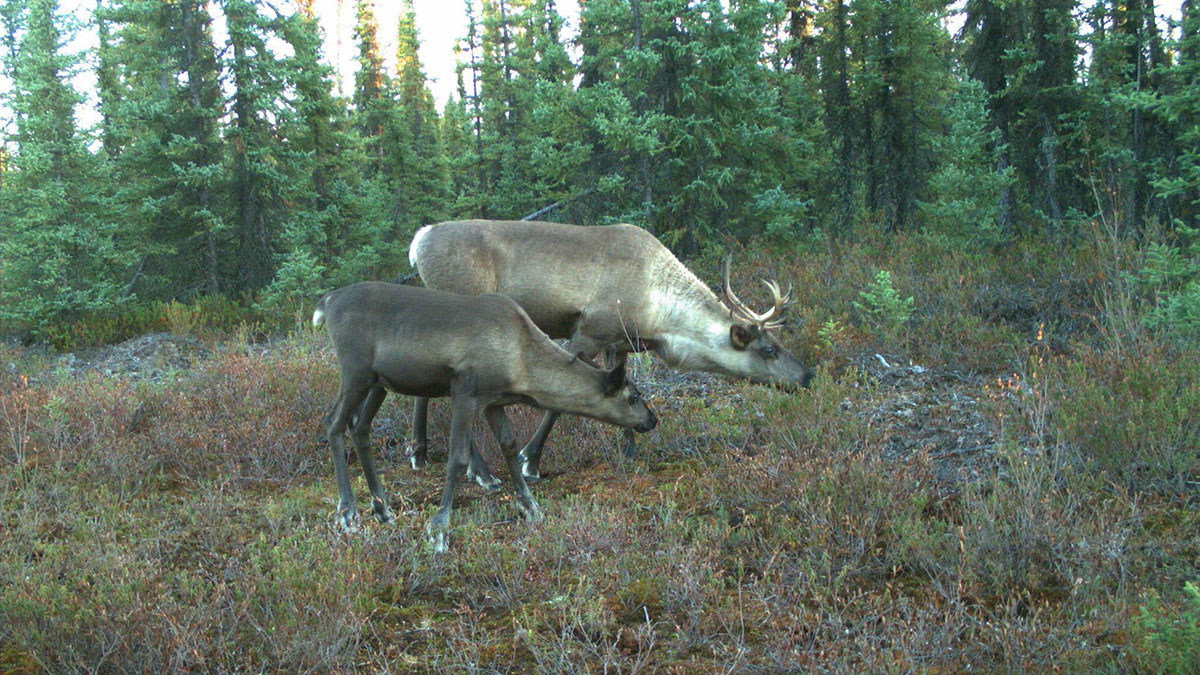
U of A researchers help secure habitat for nearly-endangered caribou
University of Alberta researchers have contributed to the province establishing the strongest plan in Canada to protect its endangered caribou from industry, wolves, and black bears.
The province is now conserving 1.8 million additional hectares for a total of 4.9 million hectares in a plan to protect woodland caribou from forestry and oil and gas development. Under Alberta’s Wildlife Act, the species is listed as “threatened,” meaning it’s likely to become at risk for extinction if current problems are not addressed. Stan Boutin, a population ecology professor and the Alberta Biodiversity Conservation Chair, is one of the researchers involved in provincial caribou conservation.
“This plan is an enormous advance forward,” Boutin said. “I am just so impressed by the breadth (the Alberta government) has included in it.”
In addition to expanding protected areas for caribou, the province is fencing off space to protect calves and yearlings from predation, an idea that originated in Boutin’s caribou conservation lab. Roughly 100 square kilometers will be fenced off, allowing females to raise their calves where they cannot be hunted by wolves and black bears. This will allow the province to rely less on culling wolves for caribou conservation — roughly 100 wolves were killed per year to help Alberta’s caribou between 2005 and 2012.
The new protections may not be enough to save the caribou, Boutin said. In the past, caribou avoided wolves by living in forests without enough other prey to attract predators. Alberta has two main caribou groups, the southern population in the Rocky Mountains and the boreal population in the north, and both have declined rapidly due to habitat loss caused by industrial development. Logging and fossil fuel extraction has pushed caribou habitats to overlap more with wolf territory, leading to a higher predation rate as well.
Wolf populations have been increasing as more moose and deer are able to thrive in these altered environments, and the higher number of wolves prey on caribou and their young. These factors will lead to caribou extinction if humans don’t intervene — and the government may be too late in tackling the problem, Boutin said.
“The whole situation in the last five to seven years was one of an impasse between industry and government groups,” he said. “(There was) a lot of talk on both sides about what to do, but no one doing anything. Complete inaction.”
The low-productivity forests that caribou once thrived in will need to be restored for caribou to survive in Alberta, but that process takes a long time. In the short term, solutions such as caribou rearing facilities are necessary for the current population’s survival, Boutin said.
In the future, Boutin will chair the province’s expert advisory panel to evaluate the success and implementation of the caribou conservation plan. U of A researchers will also be involved with monitoring the new caribou rearing facilities.
“We’re very keen on all the research that’s going to have to go into how these rearing facilities have helped the populations,” Boutin said. “There’s lots to be worked out as to the details and how the caribou respond in the system.”
More pressure may be put on the caribou as the climate changes in the future. Warmer temperatures will likely lead to higher deer populations, causing higher wolf populations and caribou predation rates. While the announcement of Alberta’s new caribou conservation plan is an important step, the public must continue pushing for action, Boutin said.
“We have to watch very carefully and see that this plan gets implemented in a timely manner,” he said. “There’s no time to waste.”









No comments:
Post a Comment